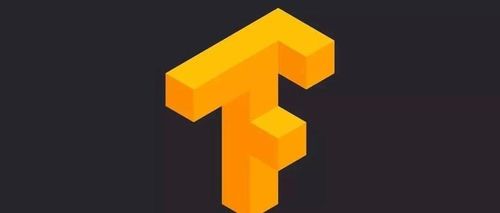各位朋友们,你们的柳猫终于诈尸了!!!今天我们讲一下如何用C#写一个Tensor Flow应用。
TensorFlow简单介绍
TensorFlow 是谷歌的第二代机器学习系统,按照谷歌所说,在某些基准测试中,TensorFlow的表现比第一代的DistBelief快了2倍。
TensorFlow 内建深度学习的扩展支持,任何能够用计算流图形来表达的计算,都可以使用TensorFlow。任何基于梯度的机器学习算法都能够受益于TensorFlow的自动分化(auto-differentiation)。通过灵活的Python接口,要在TensorFlow中表达想法也会很容易。
TensorFlow 对于实际的产品也是很有意义的。将思路从桌面GPU训练无缝搬迁到手机中运行。

示例Python代码:
import tensorflow as tf import numpy as np # Create 100 phony x, y data points in NumPy, y = x * 0.1 + 0.3 x_data = np.random.rand(100).astype(np.float32) y_data = x_data * 0.1 + 0.3 # Try to find values for W and b that compute y_data = W * x_data + b # (We know that W should be 0.1 and b 0.3, but TensorFlow will # figure that out for us.) W = tf.Variable(tf.random_uniform([1], -1.0, 1.0)) b = tf.Variable(tf.zeros([1])) y = W * x_data + b # Minimize the mean squared errors. loss = tf.reduce_mean(tf.square(y - y_data)) optimizer = tf.train.GradientDescentOptimizer(0.5) train = optimizer.minimize(loss) # Before starting, initialize the variables. We will 'run' this first. init = tf.global_variables_initializer() # Launch the graph. sess = tf.Session() sess.run(init) # Fit the line. for step in range(201): sess.run(train) if step % 20 == 0: print(step, sess.run(W), sess.run(b)) # Learns best fit is W: [0.1], b: [0.3]
使用TensorFlowSharp
GitHub:https://github.com/migueldeicaza/TensorFlowSharp
官方源码库,该项目支持跨平台,使用Mono。
可以使用NuGet 安装TensorFlowSharp,如下:
Install-Package TensorFlowSharp
编写简单应用
使用VS2017新建一个.NET Framework 控制台应用 tensorflowdemo,接着添加TensorFlowSharp 引用。
TensorFlowSharp 包比较大,需要耐心等待。然后在项目属性中生成->平台目标 改为 x64。
打开Program.cs 写入如下代码:
static void Main(string[] args)
{
using (var session = new TFSession())
{
var graph = session.Graph;
Console.WriteLine(TFCore.Version);
var a = graph.Const(2);
var b = graph.Const(3);
Console.WriteLine("a=2 b=3");
// 两常量加
var addingResults = session.GetRunner().Run(graph.Add(a, b));
var addingResultValue = addingResults[0].GetValue();
Console.WriteLine("a+b={0}", addingResultValue);
// 两常量乘
var multiplyResults = session.GetRunner().Run(graph.Mul(a, b));
var multiplyResultValue = multiplyResults[0].GetValue();
Console.WriteLine("a*b={0}", multiplyResultValue);
var tft = new TFTensor(Encoding.UTF8.GetBytes($"Hello TensorFlow Version {TFCore.Version}! LineZero"));
var hello = graph.Const(tft);
var helloResults = session.GetRunner().Run(hello);
Console.WriteLine(Encoding.UTF8.GetString((byte[])helloResults[0].GetValue()));
}
Console.ReadKey();
}运行程序结果如下:
TensorFlow C# image recognition
图像识别示例体验
下面学习一个实际的人工智能应用,是非常简单的一个示例,图像识别。
新建一个 imagerecognition .NET Framework 控制台应用项目,接着添加TensorFlowSharp 引用。
然后在项目属性中生成->平台目标 改为 x64。
接着编写如下代码:
class Program
{
static string dir, modelFile, labelsFile;
public static void Main(string[] args)
{
dir = "tmp";
List<string> files = Directory.GetFiles("img").ToList();
ModelFiles(dir);
var graph = new TFGraph();
// 从文件加载序列化的GraphDef
var model = File.ReadAllBytes(modelFile);
//导入GraphDef
graph.Import(model, "");
using (var session = new TFSession(graph))
{
var labels = File.ReadAllLines(labelsFile);
Console.WriteLine("TensorFlow图像识别 LineZero");
foreach (var file in files)
{
// Run inference on the image files
// For multiple images, session.Run() can be called in a loop (and
// concurrently). Alternatively, images can be batched since the model
// accepts batches of image data as input.
var tensor = CreateTensorFromImageFile(file);
var runner = session.GetRunner();
runner.AddInput(graph["input"][0], tensor).Fetch(graph["output"][0]);
var output = runner.Run();
// output[0].Value() is a vector containing probabilities of
// labels for each image in the "batch". The batch size was 1.
// Find the most probably label index.
var result = output[0];
var rshape = result.Shape;
if (result.NumDims != 2 || rshape[0] != 1)
{
var shape = "";
foreach (var d in rshape)
{
shape += $"{d} ";
}
shape = shape.Trim();
Console.WriteLine($"Error: expected to produce a [1 N] shaped tensor where N is the number of labels, instead it produced one with shape [{shape}]");
Environment.Exit(1);
}
// You can get the data in two ways, as a multi-dimensional array, or arrays of arrays,
// code can be nicer to read with one or the other, pick it based on how you want to process
// it
bool jagged = true;
var bestIdx = 0;
float p = 0, best = 0;
if (jagged)
{
var probabilities = ((float[][])result.GetValue(jagged: true))[0];
for (int i = 0; i < probabilities.Length; i++)
{
if (probabilities[i] > best)
{
bestIdx = i;
best = probabilities[i];
}
}
}
else
{
var val = (float[,])result.GetValue(jagged: false);
// Result is [1,N], flatten array
for (int i = 0; i < val.GetLength(1); i++)
{
if (val[0, i] > best)
{
bestIdx = i;
best = val[0, i];
}
}
}
Console.WriteLine($"{Path.GetFileName(file)} 最佳匹配: [{bestIdx}] {best * 100.0}% 标识为:{labels[bestIdx]}");
}
}
Console.ReadKey();
}
// Convert the image in filename to a Tensor suitable as input to the Inception model.
static TFTensor CreateTensorFromImageFile(string file)
{
var contents = File.ReadAllBytes(file);
// DecodeJpeg uses a scalar String-valued tensor as input.
var tensor = TFTensor.CreateString(contents);
TFGraph graph;
TFOutput input, output;
// Construct a graph to normalize the image
ConstructGraphToNormalizeImage(out graph, out input, out output);
// Execute that graph to normalize this one image
using (var session = new TFSession(graph))
{
var normalized = session.Run(
inputs: new[] { input },
inputValues: new[] { tensor },
outputs: new[] { output });
return normalized[0];
}
}
// The inception model takes as input the image described by a Tensor in a very
// specific normalized format (a particular image size, shape of the input tensor,
// normalized pixel values etc.).
//
// This function constructs a graph of TensorFlow operations which takes as
// input a JPEG-encoded string and returns a tensor suitable as input to the
// inception model.
static void ConstructGraphToNormalizeImage(out TFGraph graph, out TFOutput input, out TFOutput output)
{
// Some constants specific to the pre-trained model at:
// https://storage.googleapis.com/download.tensorflow.org/models/inception5h.zip
//
// - The model was trained after with images scaled to 224x224 pixels.
// - The colors, represented as R, G, B in 1-byte each were converted to
// float using (value - Mean)/Scale.
const int W = 224;
const int H = 224;
const float Mean = 117;
const float Scale = 1;
graph = new TFGraph();
input = graph.Placeholder(TFDataType.String);
output = graph.Div(
x: graph.Sub(
x: graph.ResizeBilinear(
images: graph.ExpandDims(
input: graph.Cast(
graph.DecodeJpeg(contents: input, channels: 3), DstT: TFDataType.Float),
dim: graph.Const(0, "make_batch")),
size: graph.Const(new int[] { W, H }, "size")),
y: graph.Const(Mean, "mean")),
y: graph.Const(Scale, "scale"));
}
/// <summary>
/// 下载初始Graph和标签
/// </summary>
/// <param name="dir"></param>
static void ModelFiles(string dir)
{
string url = "https://storage.googleapis.com/download.tensorflow.org/models/inception5h.zip";
modelFile = Path.Combine(dir, "tensorflow_inception_graph.pb");
labelsFile = Path.Combine(dir, "imagenet_comp_graph_label_strings.txt");
var zipfile = Path.Combine(dir, "inception5h.zip");
if (File.Exists(modelFile) && File.Exists(labelsFile))
return;
Directory.CreateDirectory(dir);
var wc = new WebClient();
wc.DownloadFile(url, zipfile);
ZipFile.ExtractToDirectory(zipfile, dir);
File.Delete(zipfile);
}
}希望能给各位小伙伴带来些帮助~
柳猫还是那个懒惰的柳猫,不过欢迎回来~



 随时随地看视频
随时随地看视频




